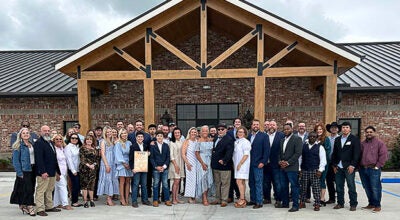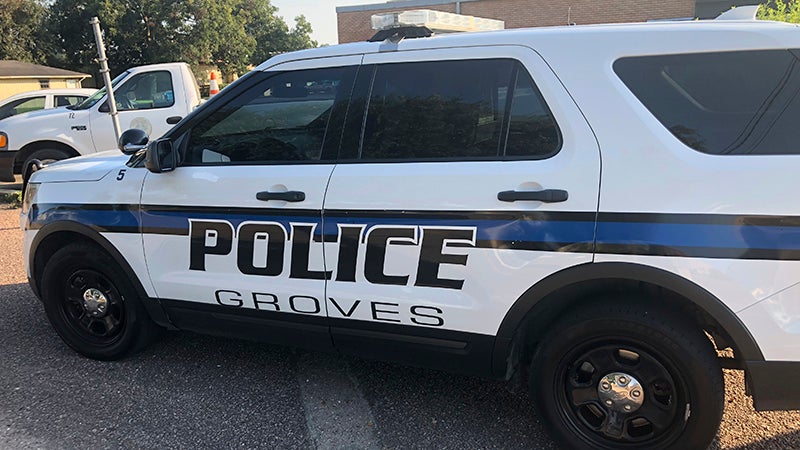Waterway steering U.S. toward energy dominance
Published 9:45 am Tuesday, May 29, 2018
By Ken Stickney
Insiders know.
Those who grant the permits, plan the projects, build the facilities, produce the products, load the ships, collect the taxes, sail the waters.
They know that something is happening on the Sabine-Neches Waterway in growing abundance, that the waterway has taken on new and unprecedented activity as natural resources, national policy and global opportunity have intersected.
President Trump in 2017 touted a U.S. energy policy that would not only make this country energy self-sufficient but one that would make the U.S. energy industry dominant globally.
It was no pipedream. Technological advances — fracking, primarily — were the keys that unlocked seemingly limitless supplies of fossil fuels in this country, much of them in western Texas.
Results were not limited to this oil-and-gas rich state, nor did they simply make for a national story. U.S. energy prowess, gained over the last decade, has transformed our global position, is restoring our trade equilibrium and promises prosperity decades into the future.
It starts here.
About face: We export
That’s what Payton Keith of Harris, Deville and Associates told folks gathered Thursday at The Texas National Maritime Celebration, a fund-raiser at Lamar State College Port Arthur for Camp SeaPort and the Port Arthur International Seafarers’ Center, held in connection with National Maritime Day, which was observed Tuesday.
The event is local and the cause is noble, but Keith’s message, sent on behalf of the Sabine-Neches Waterway, was delivered to an audience that extends far beyond Port Arthur, Sabine Pass and the Gulf of Mexico.
In short, it is this: A decade ago, the U.S. was scrambling to meet its energy needs by dealing with Russian tyrants, Venezuela’s strongmen and the Organization of Petroleum Exporting States, mostly dominated by Saudi Arabia and other Middle Eastern producers, including Iran.
In this part of the Gulf of Mexico, liquefied natural gas companies were preparing facilities that would receive LNG from elsewhere around the globe, needed fuel to power U.S. industry.
No more.
Fracking freed us
With fracking, the U.S. unearthed vast supplies of natural gas from places like Ohio and North Dakota, Wyoming and Kansas. And, in enormous amounts, they found it in western Texas. The fledgling LNG industry in the U.S. had to make an abrupt U-turn, no longer preparing to import natural gas but to export it — in abundance.
“Ten years ago we thought we’d be in short supply,” Keith told his audience. Not now.
There’s more, of course. Speaking at Thursday’s celebration during his “State of Waterways Address” and Friday, in an interview in a Nederland coffee shop, Keith noted that the Sabine-Neches Waterway is at the forefront of the U.S.’ emerging energy dominance.
Consider that 99 percent of American LNG exports pass through this waterway, 39 percent of crude oil exports. That ranks the Sabine-Neches Waterway as No. 1 in the U.S. in both areas.
“We don’t talk a whole lot about petroleum coke, but we’re No. 1 in exporting that, too,” he said.
In 2016, the Sabine-Neches became a net exporting waterway, with revenues of about $11.6 billion. It contributed more than $2 billion in reducing the national trade deficit.
In 2017, the margin rose to 81 percent in export revenues, $20.5 billion, principally in LNG and crude oil exports. It was only in 2015 that Congress passed legislation to permit crude oil exports; Corpus Christi was the top port for crude exports in 2016 but the Sabine-Neches wrested the crown from our coastal Texas neighbor the following year.
Big 4: Count us in
Four Gulf Coast ports are operating in the black for international trade nowadays: Houston, Sabine-Neches, New Orleans and Corpus Christi
Houston, with vast supplies of petrochemicals, won’t be eclipsed for profit. But the Sabine-Neches, too, is building its own momentum.
Keith, a Louisiana native and son of an oilman, educated at Southern Methodist and a former aide to U.S. Sen. John McCain, said this waterway is just getting started. Part of the reason rests in this truth: Energy prowess in Texas, expressed in exports overseas, has become a source of reliable energy to our natural allies in Northern Europe, who have been dependent on the Russian Bear for their energy supplies.
As Russia crushed its neighbors like Serbia and Ukraine in recent years — Ukraine had been a natural gas source to Europe — Europe took notice.
Now, with the possibility of importing LNG from the Sabine-Neches Waterway, the future looks more certain for Europe and the promise of growth in trade here looms large. Small wonder that Polish representatives were here talking energy earlier this year. Keith said the Sabine Neches Waterway and its ports exported to 25 countries in 2017.
From the outset, Cheniere had looked toward Asia for markets, too, and signed contracts that promised steady exports. Improvements to the Panama Canal — it can handle larger LNG transport ships now — decreased travel time to Far Eastern markets. Advantages are building for energy exports.
Here’s what U.S. energy dominance might look like by 2026: Projections say the LNG shipments through the Sabine-Neches Waterway may quadruple. The 300 ships a year that pass through the waterway may grow to 880, maybe more. Crude oil exports may double from 200 to 400 ships. Butane exports may grow from 120 shiploads to 210.
Looks like us
Refinery capacity along the waterway passage should grow, too. ExxonMobil, Motiva and Valero are planning or weighing expansions. Now third-largest for refining capacity, the Sabine-Neches could spring toward No. 1, Keith said, passing Houston and the Mississippi River. If things go right, it could be No. 1 — by a lot.
That, he said, is what energy dominance is shaping up to be from this waterway.
There’s room to grow. The Sabine-Neches is the second-longest deep draft waterway — 57 miles — on the Gulf Coast, with 32 inland miles. There are 90 miles of shoreline, 22,000 acres that can be developed.
A project to deepen the waterway from 40 to 48 feet, approved but not adequately funded, would enable larger ships to use the waterway.
From this close, it can be hard for people in the area to see the big picture. But it looks promising.
“People should realize the value of this waterway, how vital it is, and spread the message,” Keith said.
That’s the message. Energy dominance is emerging in the U.S.
And it looks a lot like us.





